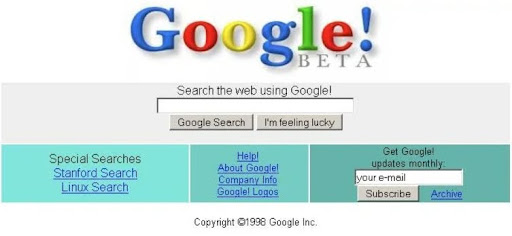The History of SEO: From the Wild West to the Modern Digital Age
Search Engine Optimization, or SEO, is like the magic behind the scenes of the internet. It’s what helps your favorite websites pop up when you type something into Google. But have you ever wondered how SEO came to be? How did we go from a chaotic, unorganized web to the smooth, user-friendly search experience we have today? Fasten your seatbelts, because we’re about to take a fascinating ride through the history of SEO—a story filled with twists, turns, and a few shady characters along the way.
The Early Days: The Birth of Search Engines (1990s)
Let’s go back in time to the early 1990s. The internet was like the Wild West—an expanding, unexplored territory with no rules. Websites were popping up left and right, but there was no easy way to find them. Imagine trying to find a needle in a haystack without a magnet. That’s what using the internet felt like back then.
Enter Archie, the first-ever search engine, created in 1990. Archie wasn’t fancy—it simply indexed files so people could find them. But it was a start. Soon after, other search engines like Veronica and Jughead joined the party. These early tools were basic, but they laid the groundwork for what was to come.

Then, in 1993, Aliweb arrived. Aliweb allowed website owners to submit their pages for indexing, which was a game-changer. For the first time, people could actively make their websites discoverable. This was the very beginning of what we now call SEO.
The Rise of Yahoo! and the Dawn of Keywords (1994-1996)
In 1994, two Stanford students, Jerry Yang and David Filo, created Yahoo!. Yahoo! started as a directory of websites, organized by humans. It was like a phone book for the internet. If you wanted your site listed, you had to submit it manually. This was the first time businesses realized the importance of being “findable” online.

Around the same time, keywords became a big deal. Website owners figured out that if they stuffed their pages with popular words, they could rank higher in search results. This led to a practice called keyword stuffing—where people would include as many keywords as possible into their content, even if it didn’t make sense. For example, a page about shoes might say, “Buy shoes, cheap shoes, best shoes, shoe sale, shoes online, buy shoes now…”
This was the Wild West of SEO—no rules, no guidelines, just chaos. But things were about to change for the better.
Google Enters the Scene (1997-2000)
In 1996, two other Stanford students, Larry Page and Sergey Brin, started working on a new kind of search engine. They called it Backrub. Backrub was different because it didn’t just look at keywords—it analyzed how websites linked to each other. The idea was simple: if a lot of websites are linked to a particular page, it must be important.

In 1998, Backrub became Google, and the rest is history. Google’s algorithm, called PageRank, revolutionized search. Suddenly, it wasn’t just about keywords—it was about quality. Websites with good content and lots of links ranked higher. This was the birth of modern SEO.
But with great power came great responsibility. As Google grew, so did the tricks people used to take advantage of the system. This led to the first SEO wars.
The SEO Wars: Black Hat vs. White Hat (2000-2003)
In the early 2000s, SEO became a battlefield. On one side, you had White Hat SEO—ethical practices like creating great content and building genuine links. On the other side, you had Black Hat SEO—shady tactics like keyword stuffing, invisible text, and link farms.

Black Hat SEO was like a villain in a superhero movie. They found success… for a while. But Google wasn’t having it. The company started cracking down on spammy practices, penalizing websites that tried to cheat the system. This was the beginning of Google’s endless cat-and-mouse game with spammers.
During this time, SEO professionals emerged as the heroes of the digital world. They helped businesses pass through safely following the ever-changing rules of search engines. But the game was far from over.
The Age of Updates: Panda, Penguin, and Hummingbird (2011-2013)
By the 2010s, Google had become the undisputed king of search. But with great power came great responsibility. Google realized that to keep users happy, it needed to keep improving its algorithm. Enter the era of algorithm updates.
In 2011, Google released Panda, an update designed to punish low-quality content. Websites with thin, duplicate, or spammy content saw their rankings take a nosedive. This was a wake-up call for businesses: if you wanted to rank, you needed to create valuable, original content.
Then, in 2012, Google dropped Penguin, which targeted spammy links. If you were buying links or using shady tactics to boost your rankings, Penguin would slap you down.
Finally, in 2013, Google introduced Hummingbird, an update that focused on understanding the intent behind searches. Instead of just matching keywords, Hummingbird tried to figure out what users really meant. For example, if you searched for “best pizza near me,” Google would show you local pizza places, not just pages with the words “best” and “pizza.”
These updates changed the game. SEO was no longer about tricking the system—it was about understanding users and delivering what they wanted.
The Mobile Revolution and the Rise of Voice Search (2015-Present)
As smartphones took over the world, Google realized that search had to adapt. In 2015, the company rolled out Mobilegeddon, an update that put mobile-friendly websites first. If your site wasn’t optimized for mobile devices, then you were in trouble.
Around the same time, voice search started gaining popularity. Thanks to virtual assistants like Siri and Alexa, people began searching by speaking instead of typing. This meant SEO had to evolve again. Now, it wasn’t just about keywords—it was about natural language and conversational phrases.
For example, instead of typing “weather Fort Kochi,” someone might say, “What’s the weather like in Fort Kochi today?” SEO professionals had to think about how people talk, not just how they type.
The Future of SEO: AI, E-A-T, and Beyond
Today, SEO is more complex—and more exciting—than ever. Google’s algorithm is powered by artificial intelligence (AI), which means it’s constantly learning and improving. The focus is now on E-A-T: Expertise, Authoritativeness, and Trustworthiness. In other words, Google wants to rank websites that are credible, reliable, and created by experts.
But the future of SEO isn’t just about algorithms—it’s about people. At its core, SEO is about understanding what users want and delivering it in the best possible way. Whether it’s through blog posts, videos, or interactive content, the goal is the same: to help people find what they’re looking for.
Why SEO Matters More Than Ever
So, why should you care about the history of SEO? Because it’s not just a story about technology—it’s a story about how we connect with the world. SEO has shaped the way we find information, make decisions, and even think.
For businesses, SEO is a powerful tool. It’s not just about ranking higher on Google—it’s about reaching the right people at the right time. And for individuals, understanding SEO can help you navigate the digital world with confidence.
Join the SEO Revolution
If you’re fascinated by the history of SEO and want to be part of its future, you’re in the right place. At Zeon Academy, we’re passionate about teaching the next generation of SEO experts. Whether you’re a beginner or a seasoned pro, we’ve got the tools, resources, and knowledge to help you succeed.
So, what are you waiting for? Dive into the world of SEO and discover how you can make your mark on the online sphere. The history of SEO is still being written—and you could be part of it.
Final Thoughts
From its humble beginnings in the 1990s to the AI-driven powerhouse it is today, SEO has come a long way. It’s a constantly evolving field, but one thing remains the same: the importance of putting users first. Whether you’re a business owner, a marketer, or just someone who loves the internet, understanding SEO is key to thriving in the digital age.
So, the next time you type something into Google, take a moment to appreciate the incredible journey that brought us here. And who knows? Maybe one day, you’ll be the one shaping the future of SEO.



